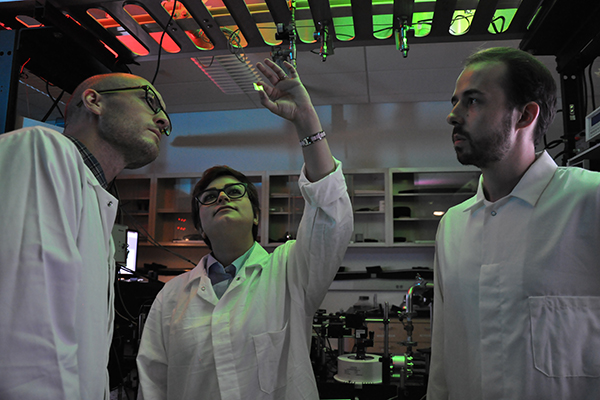
Full Text:
Physicists at the University of California, Riverside, have developed a photodetector--a device that senses light--by combining two distinct inorganic materials and producing quantum mechanical processes that could revolutionize the way solar energy is collected. Photodetectors are almost ubiquitous, found in cameras, cell phones, remote controls, solar cells and even the panels of space shuttles.
Measuring just microns across, these tiny devices convert light into electrons, whose subsequent movement generates an electronic signal. Increasing the efficiency of light-to-electricity conversion has been one of the primary aims in photodetector construction since their invention. In existing solar panel models, one photon can at most generate one electron. In the prototype the researchers developed, one photon can generate two electrons or more through a process called electron multiplication.Image credit: Iqbal Pittalwala/University of California, Riverside